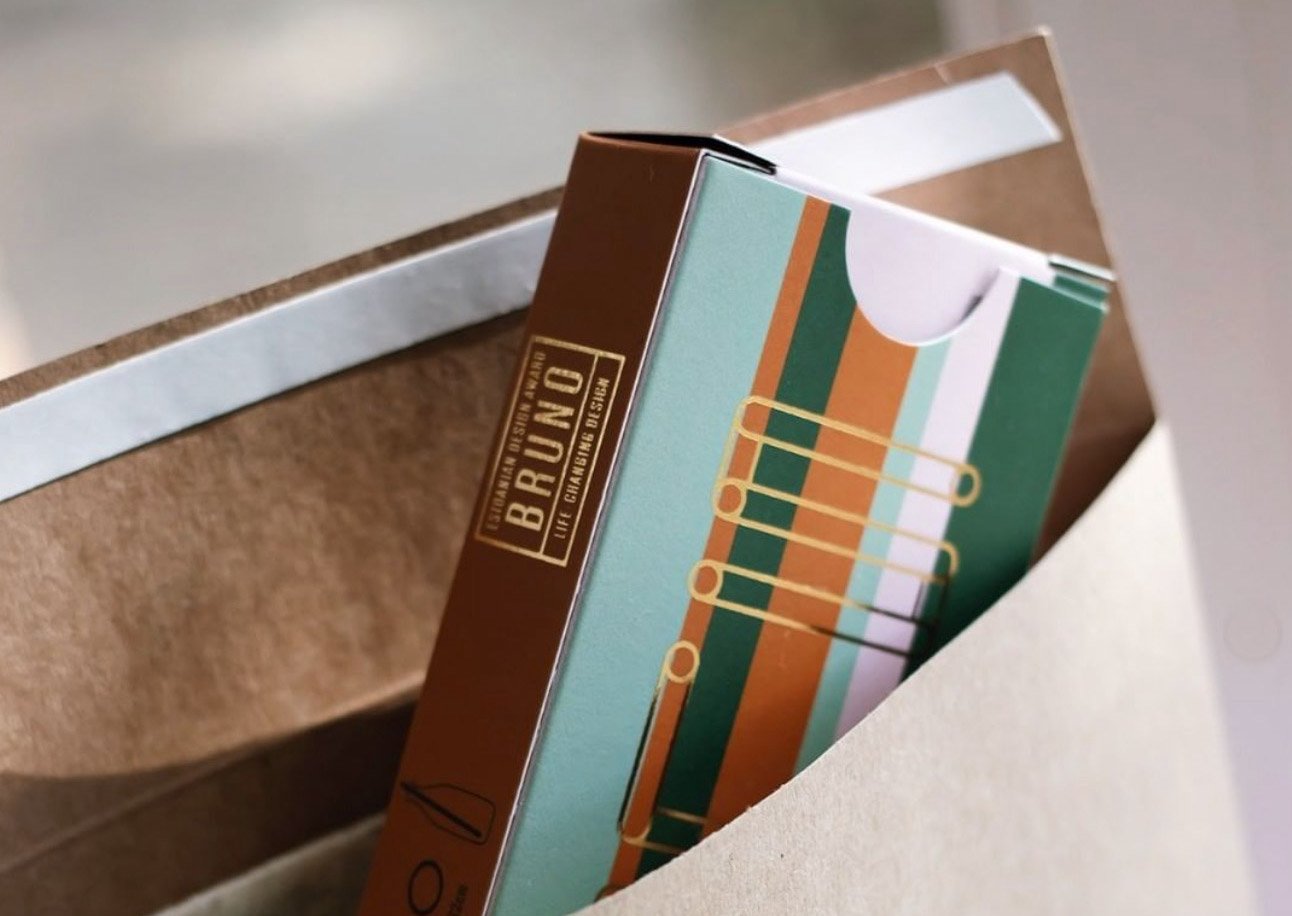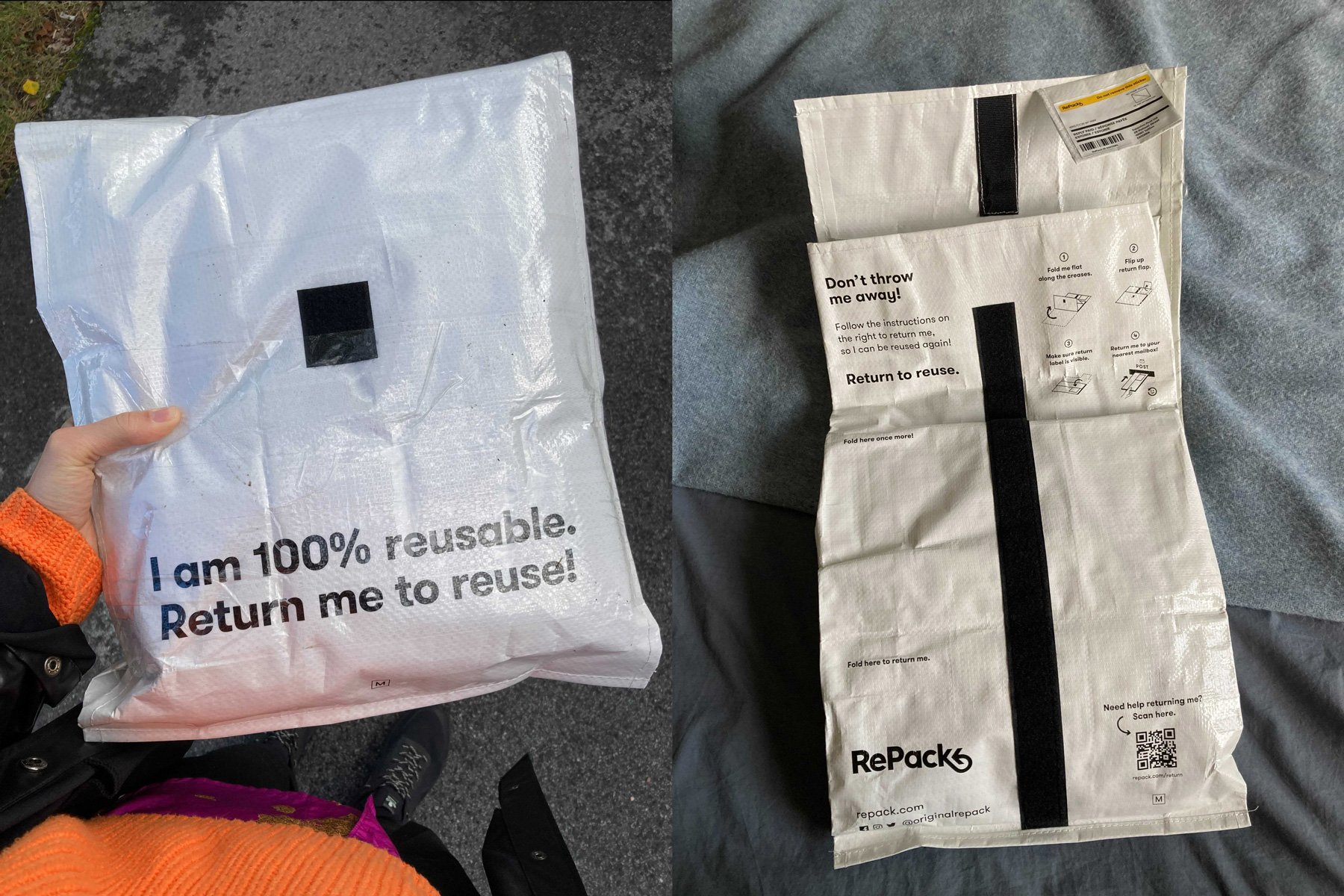Ecommerce packaging: everything you need to know
Last updated: August 14, 2025
Ecommerce might be new to some, but it is here to stay. Worldwide retail ecommerce sales are estimated to exceed $4.3 trillion by the end of 2025, according to Statista.
As an ecommerce retailer, you’re in charge of the entire customer experience that online buyers go through. This customer experience spans from the shopping experience in your online store to the day when they receive your package and beyond.
The packaging you choose for your ecommerce store forms a key part of the consumer experience. In this article, we will cover everything you need to know to succeed in ecommerce packaging, all neatly stored under these headings:
What is ecommerce packaging?
Ecommerce packaging refers to the materials used to pack products for shipping.
The main purpose of ecommerce packaging is to protect your products from damage during shipping. A well-packaged product is more likely to arrive in one piece and unscratched.
Ecommerce packaging also plays a key role as the first physical touchpoint your customers have with the products they ordered. For first-time customers, it sets the tone for the first impression of your products and brand offline.
As such, the second important purpose of ecommerce packaging is delivering an on-brand unboxing experience.
Just in case you are not convinced about the need to invest time and money into the postal packaging of your ecommerce store, let’s take a closer look at the importance of ecommerce packaging.
Why is packaging important in ecommerce?
In essence, the importance of ecommerce packaging boils down to three things: protection, brand-building, and word-of-mouth marketing.
Protection
Whether you’re selling clothes or fragile items like cosmetics or eyewear, it’s important that the products arrive unharmed. Great ecommerce packaging protects your products on the journey from your warehouse to the customer’s hands.
“Packaging is important in ecommerce because it protects your product and helps it get to the customer safely. If you're selling a physical product, you want to make sure that it arrives in the condition you sent it out in. This can be especially important if the item is fragile or expensive, and if your customer is paying for shipping costs.”
– Marty Spargo, Co-Founder of REIZECLUB
Protection is so important because broken, scratched or otherwise damaged products don’t just leave a short-term negative impression on the customer. They also create work for your customer support and returns team, incurring further costs.
What’s more, the durability of the packaging itself is also important. According to one survey by Smithers, 58% of consumers said damaged packaging would deter them from buying a product again. Knowing how to pack fragile items for shipping is as vital as knowing what product to ship. This is why poor-quality packaging can negatively impact future sales.
Brand-building
“As a brand, your packaging is one of the best ways to connect with your customers, and it's the first impression they get about your products. Your packaging is a chance to deliver an unbeatable customer experience and show them what it is you do, and what you stand for.”
— Darcy Ogdon-Nolan, Founder & Owner of The Bircher Bar
Ecommerce packaging is prime real estate for introducing your brand – that is, what your values are and what you stand for. When your brand stands for sustainability, and your packaging does not echo this value, your customers will see through it.
If you’ve ever unboxed an iPhone, you know what I’m talking about. Its packaging is completely in sync with what Apple stands for—minimal, clean, world-class design.
When done well, ecommerce packaging is essentially just the outer layer of the same unboxing experience.
And boy, have ecommerce brands started to jump on the opportunity to make the most of their packaging as a brand-building tool.
Perhaps you’ve also received a super customised box, Instagrammable personal notes, wrapping paper that smells like it was sent directly from a rose garden, or free product samples added as a delightful surprise with the goods you ordered. In order to compete with such high standards, you will have to elevate and customise your packaging.
It’s worth highlighting that in addition to the visual look, consumers are also paying more and more attention to where brands stand in terms of sustainability. A big part of this is the environmental sustainability of the packaging — if it’s reusable or recyclable, if it’s made of renewable materials, as well as the amount of packaging used.
It has been shown that an overwhelming majority of European consumers are more likely to purchase again from brands that ship products sustainably. Make sure to walk the walk and show your customers that you are aligned with their values.
Word-of-mouth marketing
The unboxing experience that your parcels present can have an impact beyond the customer who ordered from you.
If you manage to impress customers with your ecommerce packaging, they’re more likely to share the experience with their friends or even publicly on social media or streaming platforms. And such word of mouth is the holy grail of every ecommerce marketing manager.
“People are speaking more about the packaging than the product, and that is the power of packaging.”
— Andry Soo, SDR at Woola
So, as you choose the ecommerce packaging for your business, make sure to consider the unboxing experience as a whole, and ask yourself: “How will I feel when I open up this package?” You’ll thank yourself later!
Choosing postal packaging for your ecommerce company
If you’re just starting your ecommerce business, it’s a good idea to go with a ready-made packaging solution (big thumbs up if this is a sustainable option). Once your business is up and running, you will want to invest more into things that will build your brand in the long term, such as customised ecommerce packaging or delightful little surprises.
“I actually think retailers should steer away from generic postal packaging and invest in custom packaging as a marketing asset. Your packaging is such a powerful opportunity to say so much about your business.
As a customer, the difference between receiving a product in generic postal packaging vs custom-branded and exceptionally well-designed packaging can be a game changer.”
— Darcy Ogdon-Nolan, Founder & Owner of The Bircher Bar
When it comes to the characteristics of your products, it’s things like shape, size, weight and frailty that will largely determine your postal packaging needs. For example, clothes don’t need extra cushioning, but you wouldn’t ship a glass vase without a protective layer in the packaging.
Finally, it’s important to bear in mind that the postal packaging you use for your orders can also influence your shipping costs. Depending on where in the world you are, shipping costs will be determined by certain brackets of size and/or weight of the parcel. Consult with your shipping provider for more info.
Pro tip: Whatever types of packaging you end up considering, it’s always a good idea to get samples. Use these to do a few trial runs of shipping parcels to yourself or friends and family to make sure your items arrive in one piece and to evaluate the experience.
Types of ecommerce packaging
When it comes to the types of ecommerce packaging, they fall into three categories: mailing bags and envelopes, shipping boxes and circular packaging.
Mailing bags and envelopes
Most convenient for shipping smaller products, mailing bags and envelopes are popular choices among ecommerce businesses. These types of packaging are super easy to use, typically have a convenient peel-and-seal closure and don’t take up a lot of space in your warehouse.
When it comes to materials, this category has historically been dominated by plastic poly-mailers and bubble wrap mailing envelopes. While such plastic packaging is durable, lightweight, and affordable, it bears a high cost to the environment. And let’s be honest, plastic doesn’t look too good.
The good news is that innovative packaging companies have created more sustainable alternatives to bubble wrap and plastic mailing bags.
Numerous packaging companies now offer compostable and biodegradable mailer bags, typically made from corn-based PLA bioplastic and fossil-fuel-based PBAT (although their sustainability is arguably questionable).
The paper industry also hasn’t slept on the opportunity and has come up with different mailers and envelopes made from recycled paper.
Even more, there are companies making sustainable protective packaging from renewable materials. For example, Woola (yep, that’s us!) replaces bubble wrap with products made from leftover wool, such as Wool Envelopes.
And Mushroom Packaging makes custom-shaped protective packaging from – you guessed it – mushrooms.
Shipping boxes
If you’re selling bigger and bulkier products, then you will likely turn to corrugated cardboard boxes. The good thing is that cardboard boxes made from recycled paper are easily available in most parts of the world. Combined with branded paper tape, it might just be the most sustainable option for shipping big packages.
Cardboard is undeniably boring on its own, that is why so many ecommerce shops opt for branded, illustrated, coloured boxes (often filled with scented wrapping paper taped together with branded tape). Using brand colours and imagery on the packaging can definitely help create a unique, branded customer experience.
When making a choice here, keep in mind, cardboard that has been bleached and coloured with chemical dyes is less sustainable than plain cardboard.
Finally, you may be tempted to go with cardboard boxes for all your orders — but keep in mind that it’s probably more cost-efficient to use padded envelopes for smaller parcels. Right-sizing is the keyword here, for both shipping costs and sustainability!
Circular packaging
A number of companies are building circular packaging solutions that “close the loop”, ensuring that the packaging can be reused or recycled.
The main challenge of creating circular packaging systems is to make these convenient and easy to use for both the retailer and the end customer. Additionally, such systems need to be economically profitable and scalable in order to work in the long term.
We’re definitely rooting for the many companies who are taking a crack at circular packaging systems, like Boox, Hipli, Re-zip, Returnity and RePack. We know about these challenges first-hand, as we’re working towards a circular future ourselves.
Where to buy ecommerce packaging?
There are a few places where you can buy packaging for your company. Most companies find what they need at local packaging resellers and retailers – such shops typically have a physical store as well as an online store.
In recent years, some online-only packaging marketplaces, such as Circulate or PackHelp, have also appeared. These marketplaces often offer advice or paid packaging consultations.
If you have more specific needs or have eyed a particular packaging company that you want to buy from, you can often also buy packaging directly from the manufacturer. If their MOQs (minimum order quantities) are too big for you, they can often redirect you to buy from a reseller they have partnered with.
“I look to partner with unique packaging producers that can provide unique custom solutions that help brands stand out. Packaging is now so much more than simply a way to deliver a product, it is marketing.”
— Darcy Ogdon-Nolan, Founder & Owner of The Bircher Bar
Many ecommerce companies start using third-party logistics (3PL) services as they grow. 3PL service providers typically offer retailers various options for the packaging used to ship out their ecommerce orders. To find out about the ecommerce packaging 3PL service providers near you offer, find their websites and inquire directly — a quick Google search for "Texas warehouses" or "Paris third-party logistics" can help you here.
Finally, you can also consider turning to full-service packaging design agencies. While these agencies have traditionally mostly worked on primary and secondary packaging design, ecommerce packaging is an increasing share of their business.
Ecommerce packaging trends
If we had to pick just seven words to describe what’s going on with ecommerce packaging, we’d use these: sustainability, eye-catching design, customisation & packaging inserts.
And it makes sense. With the growing emphasis on providing a great customer experience, these trends reflect the values of a modern consumer.
The growing emphasis on sustainability, the quest for innovation, personalised experiences, and moments of delight or surprise.
The ecommerce market is constantly evolving, but there are certain trends that are more prevalent in the pattern than others.
Sustainability
At the forefront of this change is the sustainability revolution. A notable shift is evident among consumers, policy-makers, and businesses alike. An understanding that we need to prioritise sustainability in ecommerce.
Many consumers are showing a clear preference for sustainably packaged products despite economic uncertainties. And a significant portion is willing to pay more for such options.
In recent years, sustainable packaging has seen an increasing number of innovative materials being used, further emphasising the shift to a sustainable packaging future.
So, forward-looking brands can make use of innovative and sustainable packaging materials to demonstrate the sustainability of their brand.
Eye-catching design
Parallel to the sustainability trend is the rise of eye-catching innovation in packaging design.
Products that combine aesthetic textures, such as honeycomb packaging, not only offer environmental benefits but also present a visually appealing and unique unboxing experience. Such innovative designs are gaining traction, capturing the attention of consumers and setting new standards in packaging aesthetics.
Customisation
Brands are increasingly leveraging customised packaging, ranging from simple logo prints to fully customised envelopes or boxes adorned with branded elements.
Customised packaging can help you showcase your brand values and identity. It is worth noting that customising packaging should never compromise the sustainability of packaging.
In essence, the current trends in packaging underscore a broader industry movement towards sustainability, innovation, and a personalised consumer experience.
How will you deliver?
It is clear that there is a list of factors to consider when choosing your ecommerce packaging, but one thing remains unchanged in every decision: “Is this sustainable?”
When going through the list of variables, make sure to choose packaging that will inspire consumers to come back, to crave your brand’s experience over and over again. This is the golden key to consumer retention.
Whether you are shipping electronics, luxury items, or even glass bottles. Woola has packaging that can be custom-made to your product specifications. Feel free to get in touch with our sales team, or simply request your free Woola sample today.







